A friend alerted me to this tweet earlier today, knowing full well a combination of political nerdiness and geographic geekery would appeal to me. And since then I have been playing the New York Times “Can you guess how these neighbourhoods voted?” game and wondering about… the political geography of the United States. The problem? I know very little about the United States. I have never even been to any of the country apart from Washington DC, New York, Boston, a bit of Maine, and whatever you see out of the train from New York to Montreal.
In this blog post I am going to try to assess how I make my choices as to whether it’s a Trump neighbourhood or a Biden one. By all means tell me in the comments where I am missing something!
Round 1
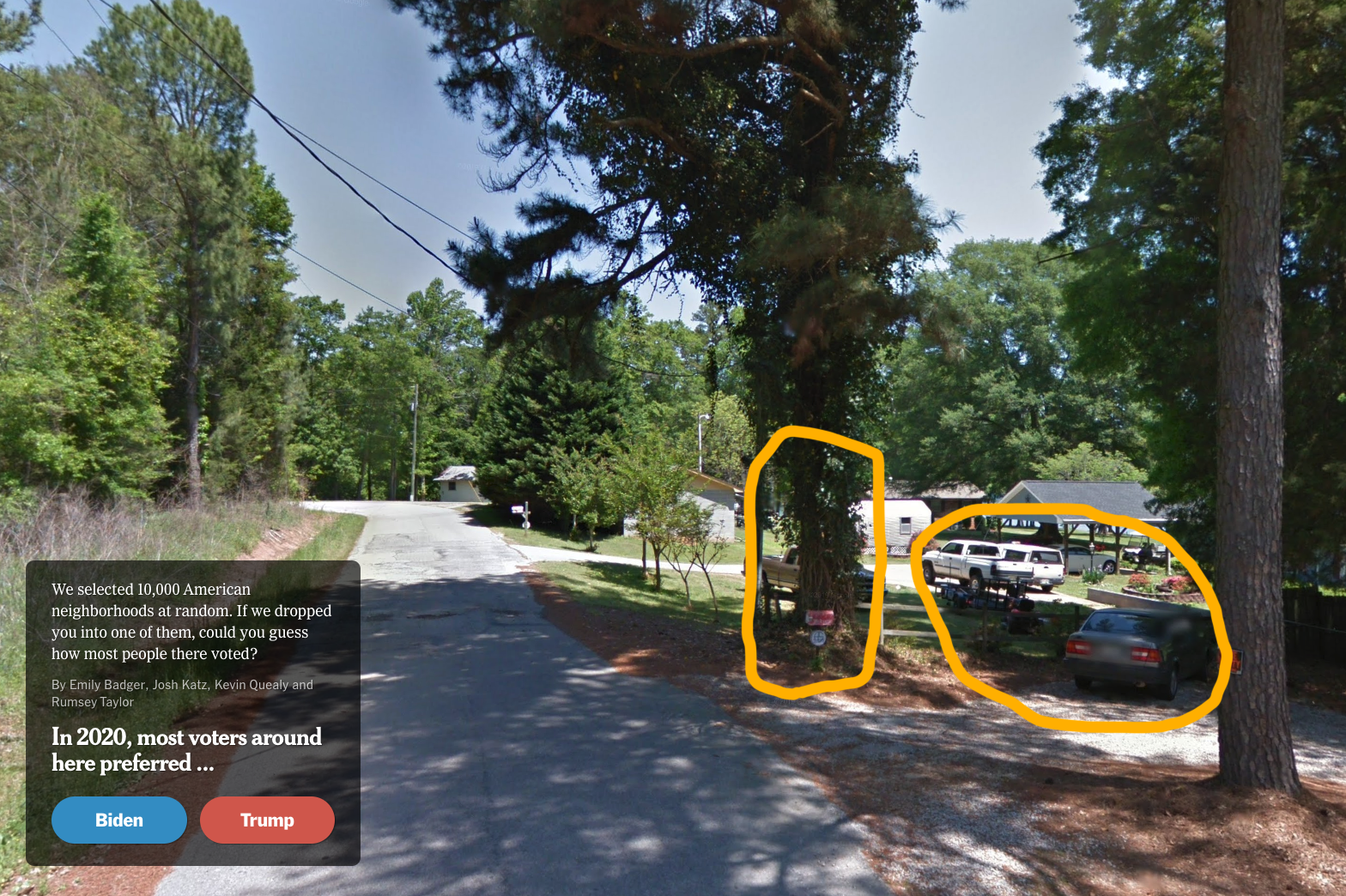
Pretty old and knackered cars. Poor-ish? And this type of tree looks like it needs warm-ish climates.

Panning around: that’s a pretty massive truck. Leaning towards Trump here. Inclination of the satellite dish shows we’re in the south, or south-ish (the further towards the equator you go, the more satellite dishes point upwards, due to satellites being in geostationary orbit).
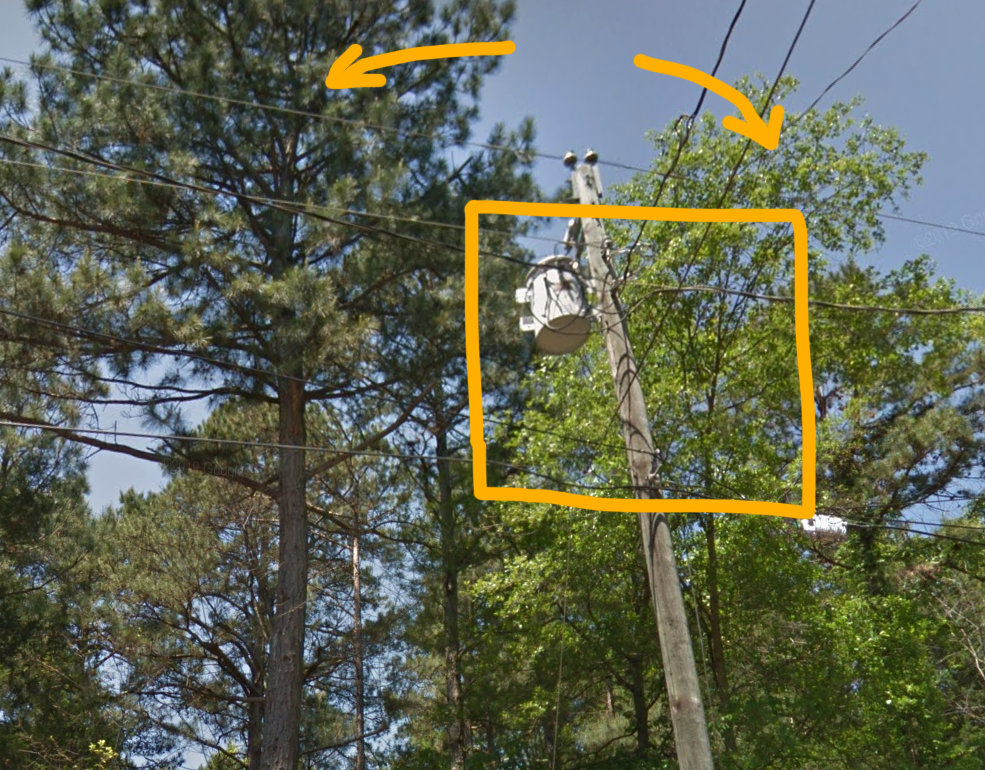
Vegetation doesn’t help us much here. Electricity infra is not very modern, but that doesn’t help much either.
So go for Trump.
And it’s right.
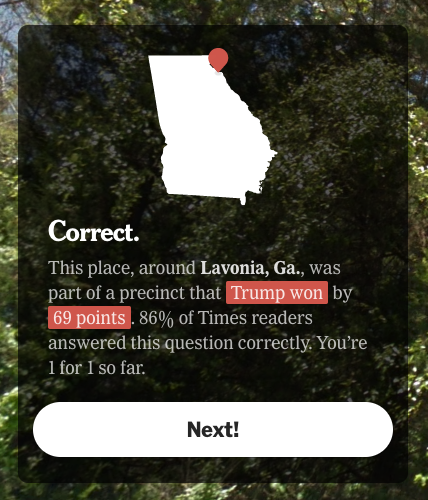
Round 2
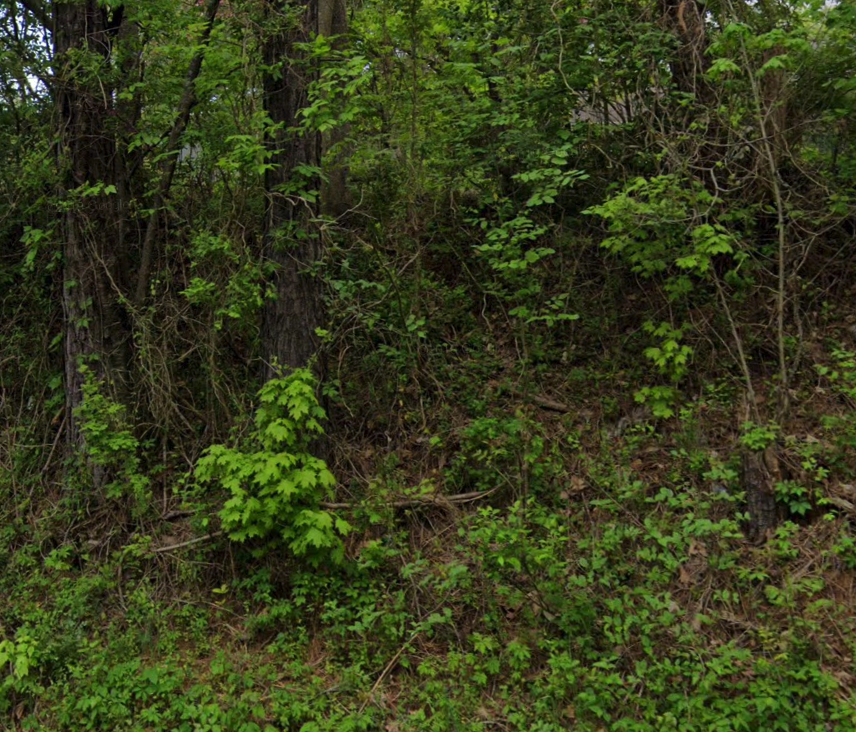
Trees mostly deciduous, reasonable amounts of rainfall here.
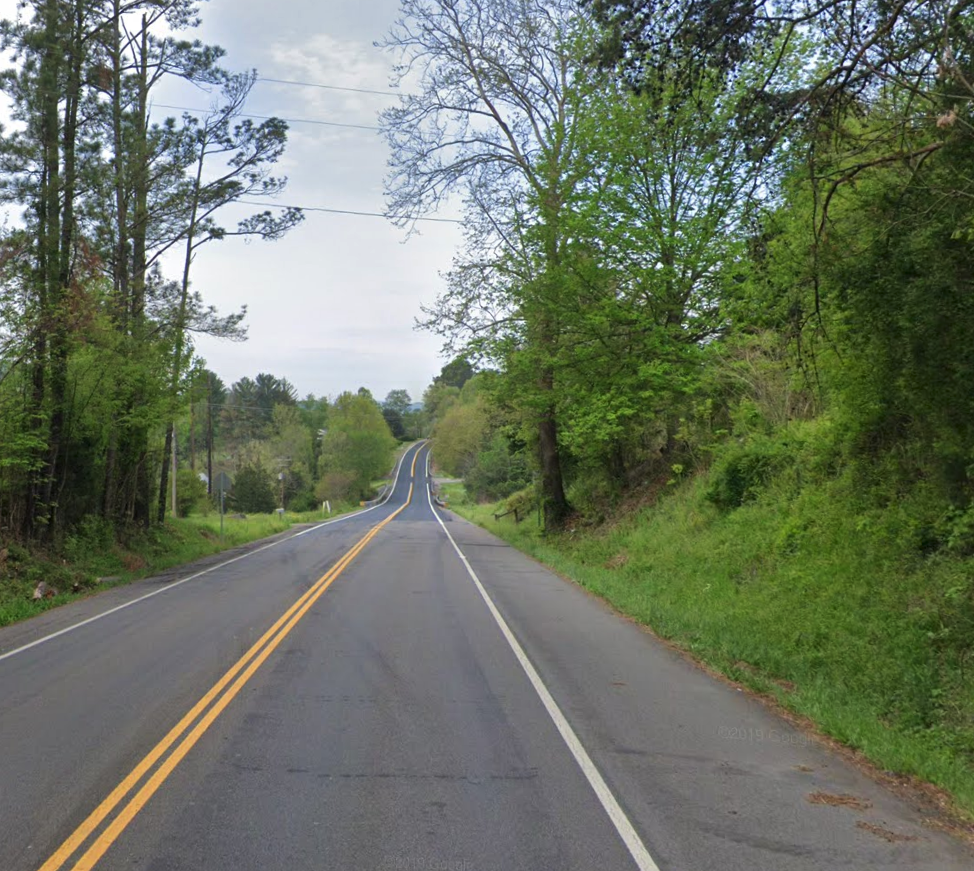
But that’s it. No cars, no buildings. Nothing to work with.
More rural / empty areas for for Trump, so guess that. And it’s right.

Round 3
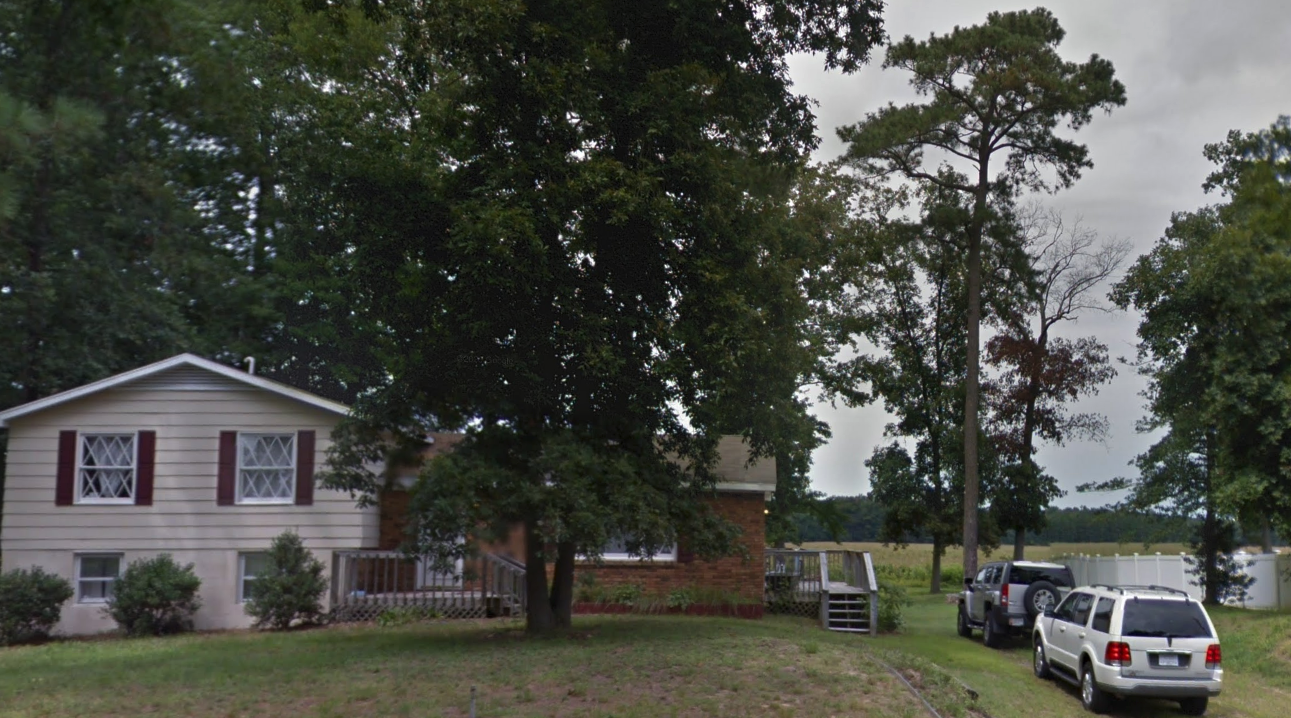
That looks like a Hummer parked there. Trump.
It’s right.

Round 4

Are those recycling bins? (Maybe my European prejudice here – do places that vote Democrat recycle more?)
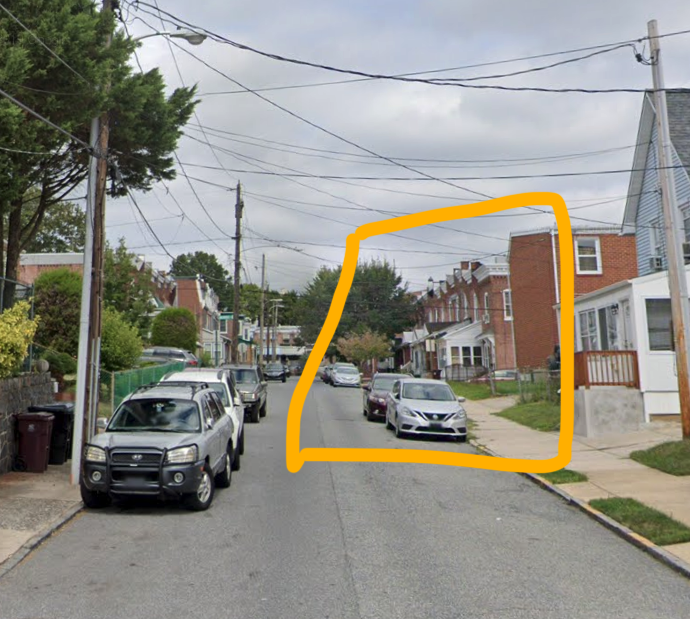
Some terraced houses there

Satellite dish less inclined than in round 1. Windows look pretty old.
North east somewhere. Will lean Democrat. So Biden.
And it is – even his home town!
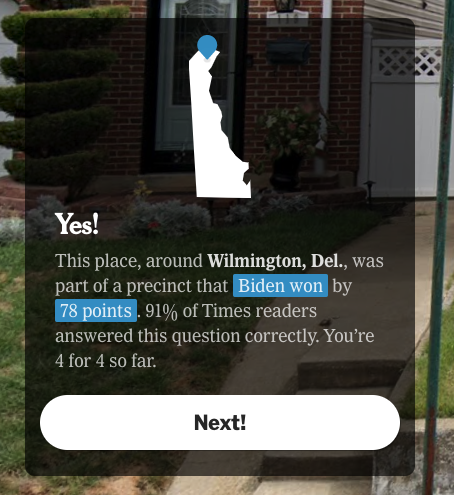
Round 5
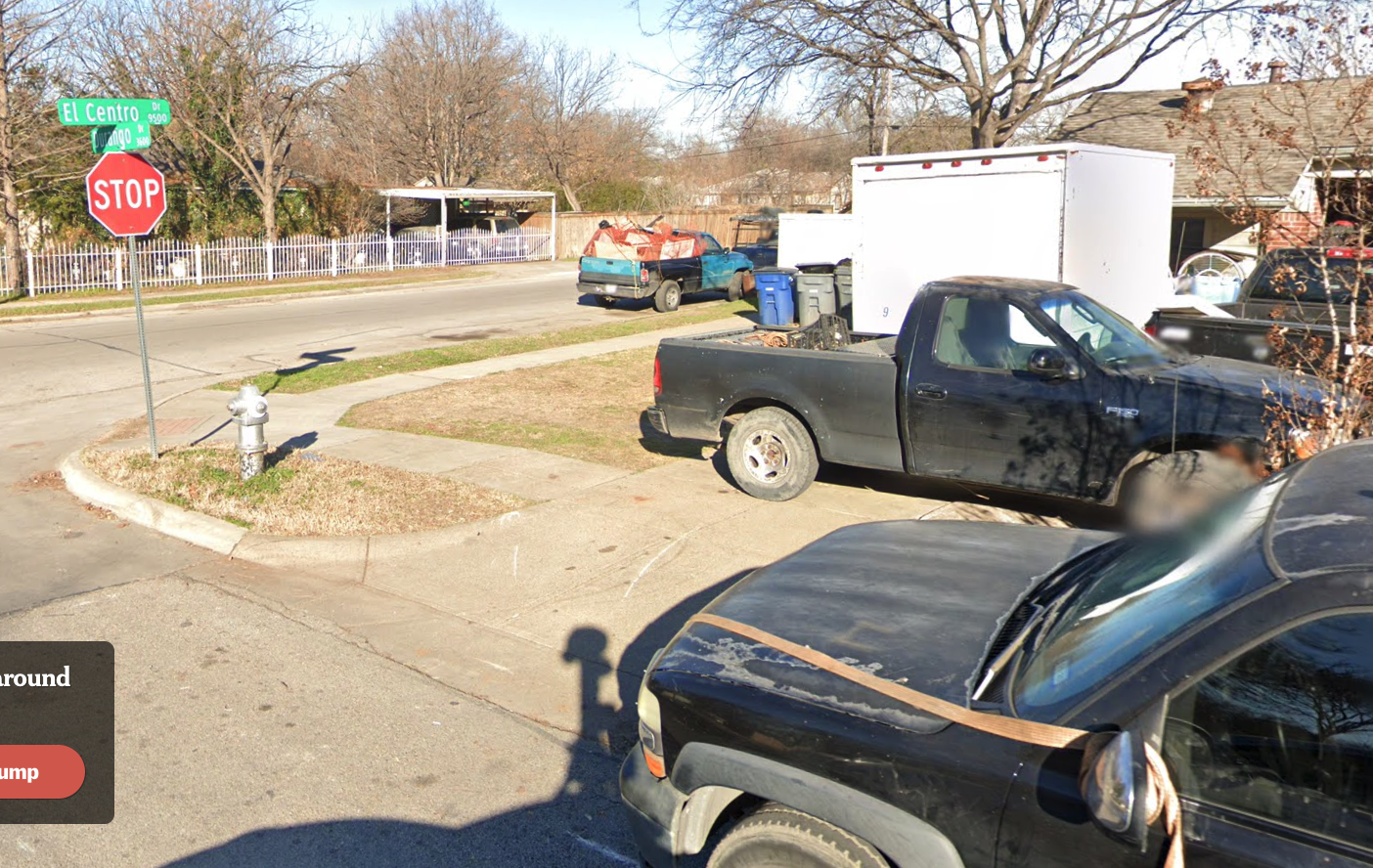
We’ve got a load of pickup trucks. Not modern ones mind. Road is called El Centro – are we in Texas?
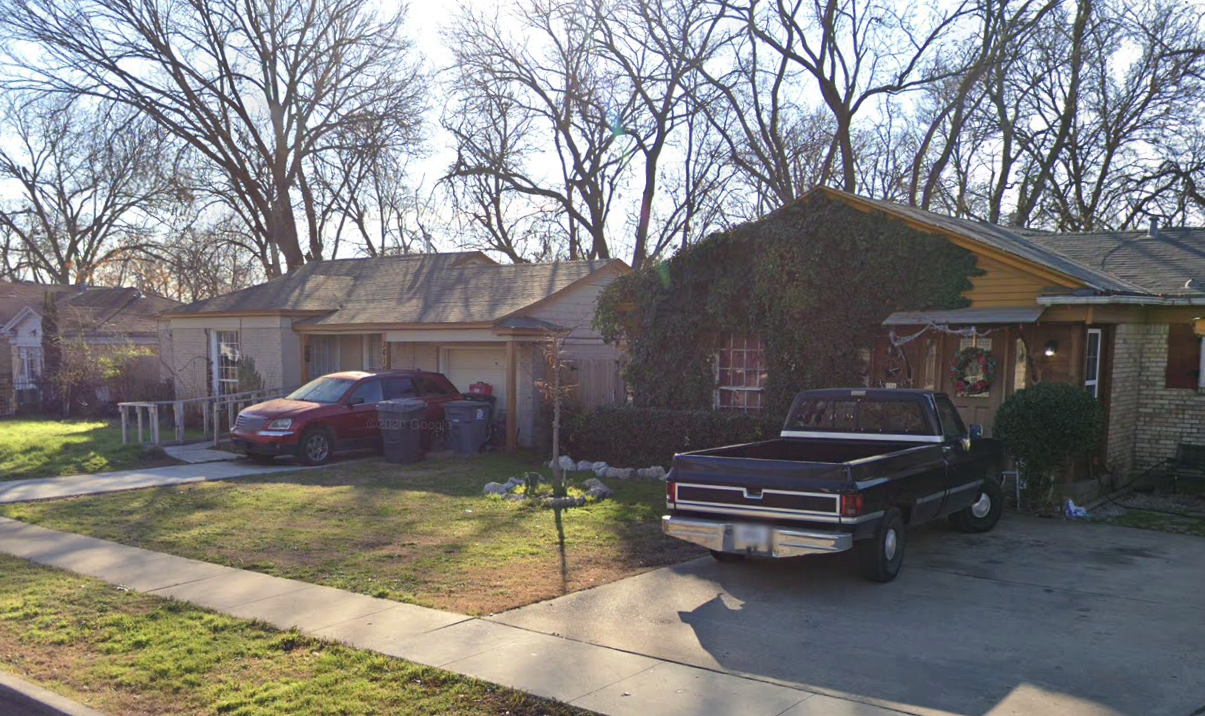
This place is not rich though. And it has sidewalks, so probably the edge of a city. Texas has some Democrat areas. So Biden.
And it’s right.
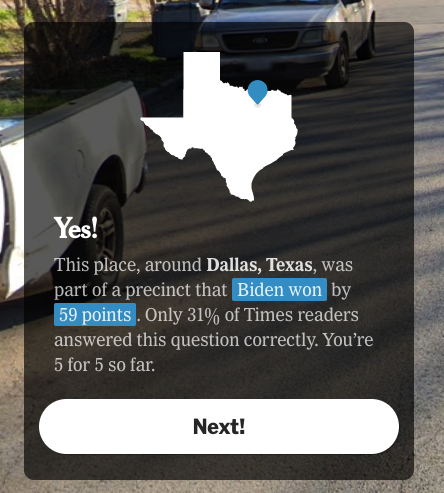
Round 6
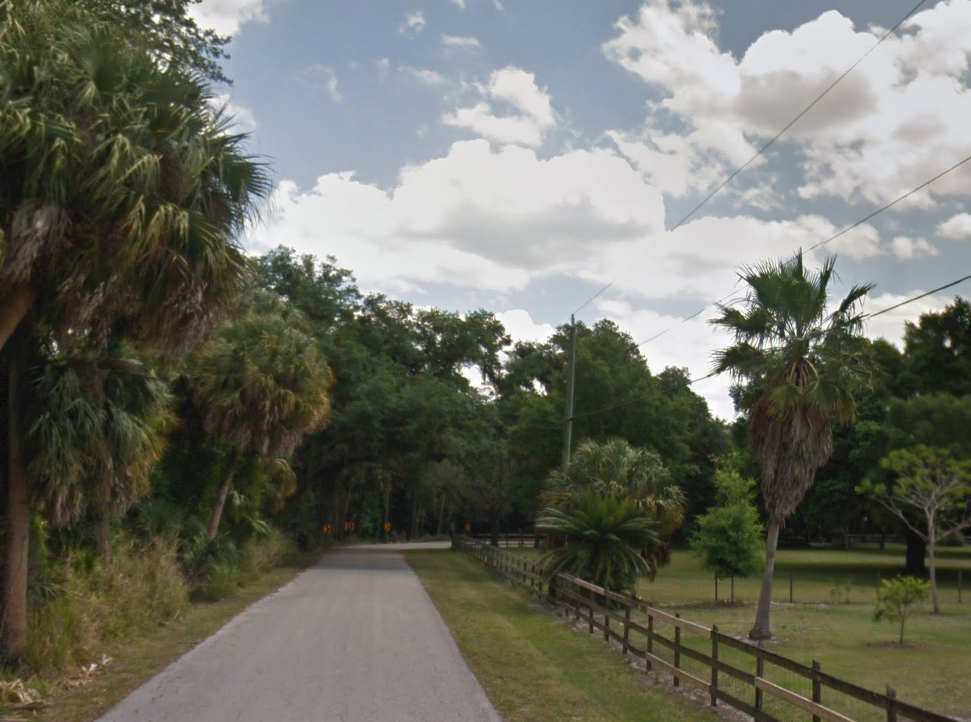
We’ve got palm trees. And it’s pretty green. So we’re probably in Florida.
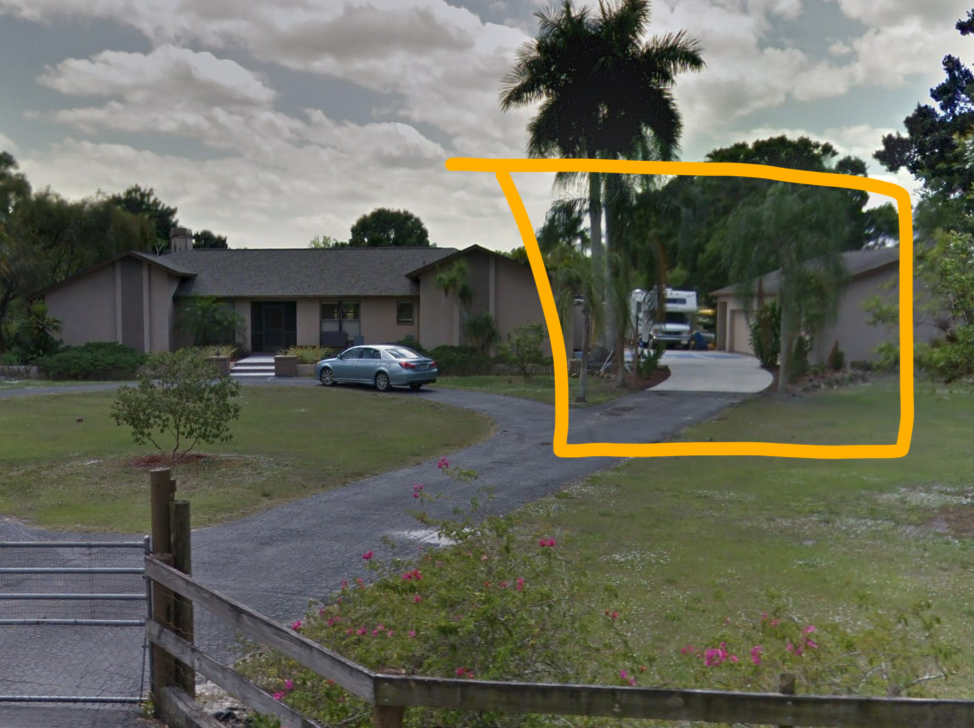
The house and this camper don’t help us much, although these people clearly are not living in poverty.
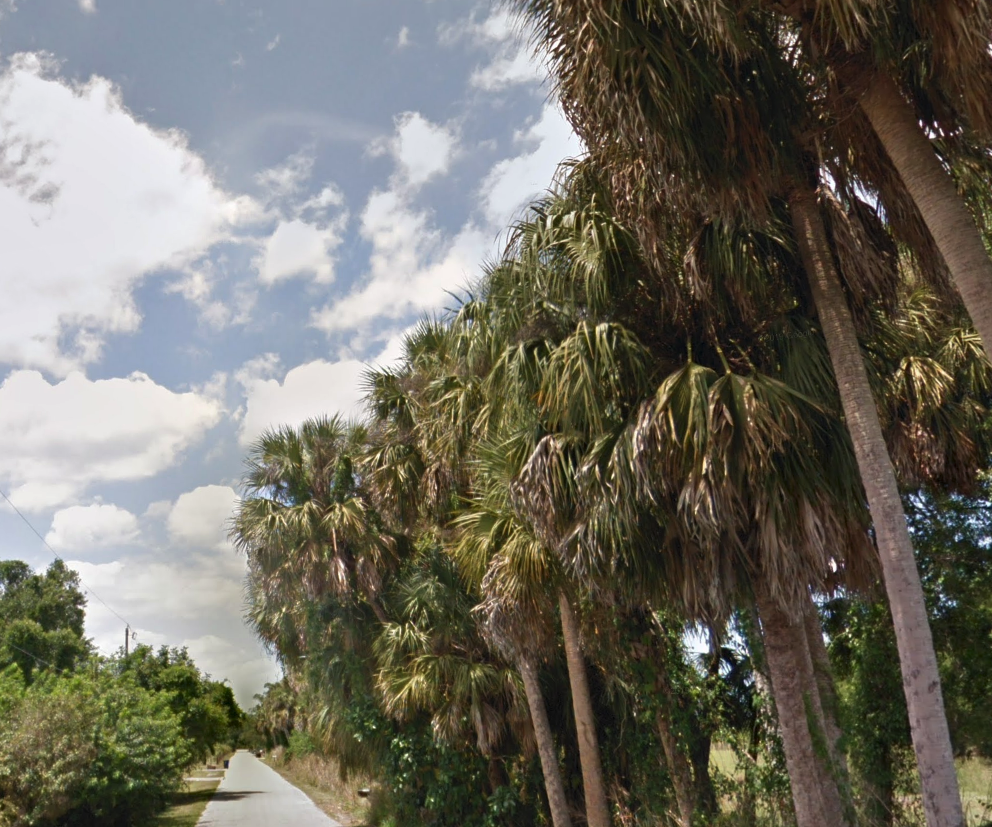
And on the other side more palm trees. We’re not in a city though, or even suburbia. So Trump.
And it’s right.

Round 7
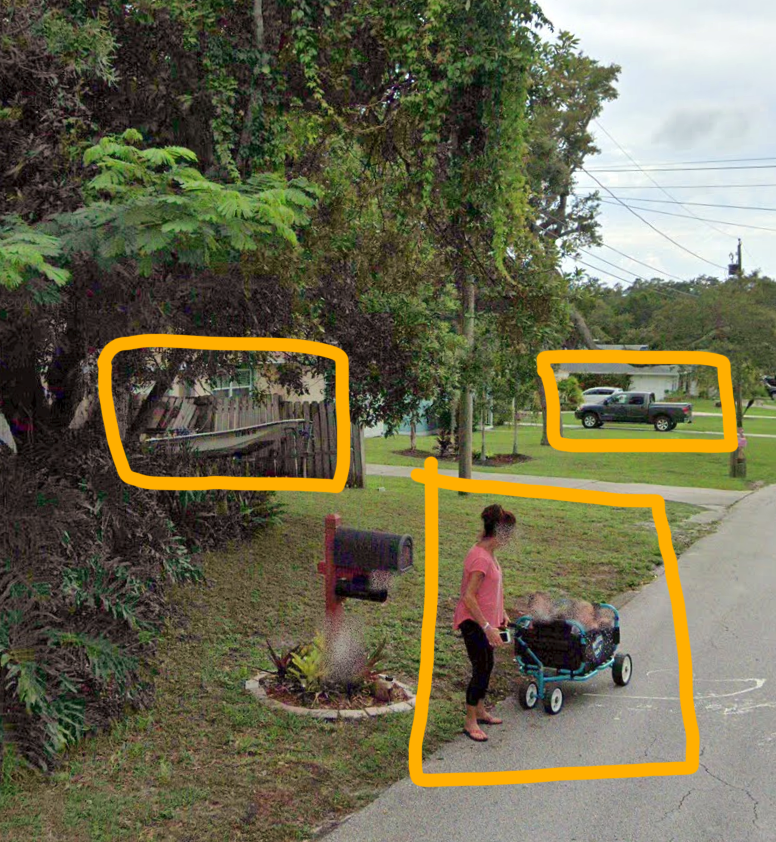
We have a woman transporting a bunch of kids – on foot. And a boat and a big truck. Florida again?
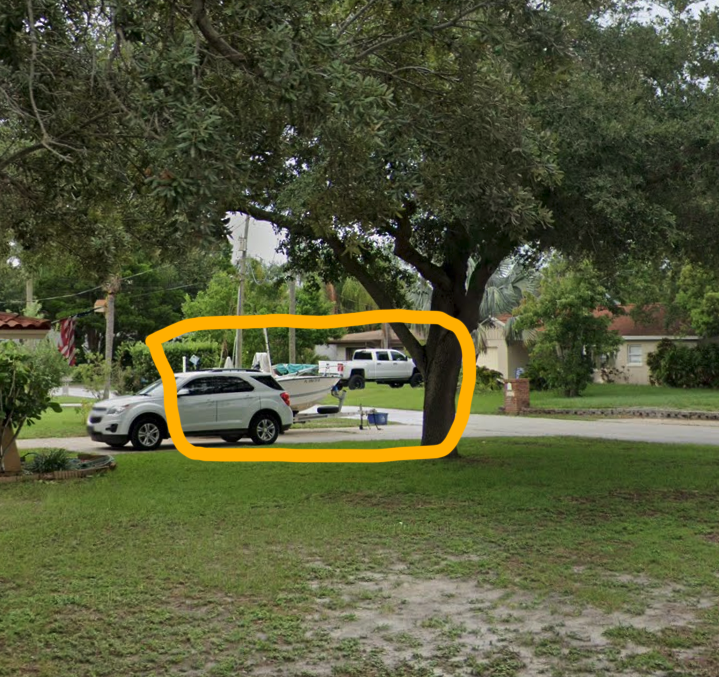
More boats and trucks.
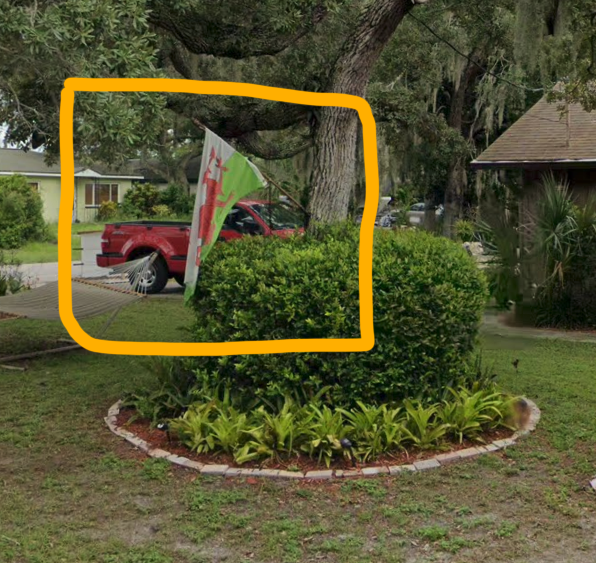
And another truck. Err, and a Welsh flag.
Trump, based on the buildings and the trucks.
And it’s correct.

Round 8
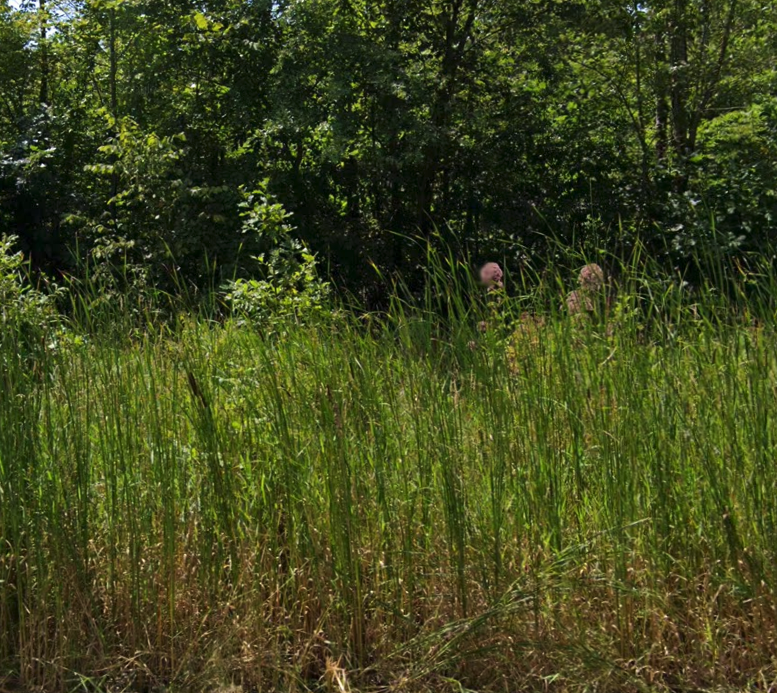
It’s pretty green. And not too warm.
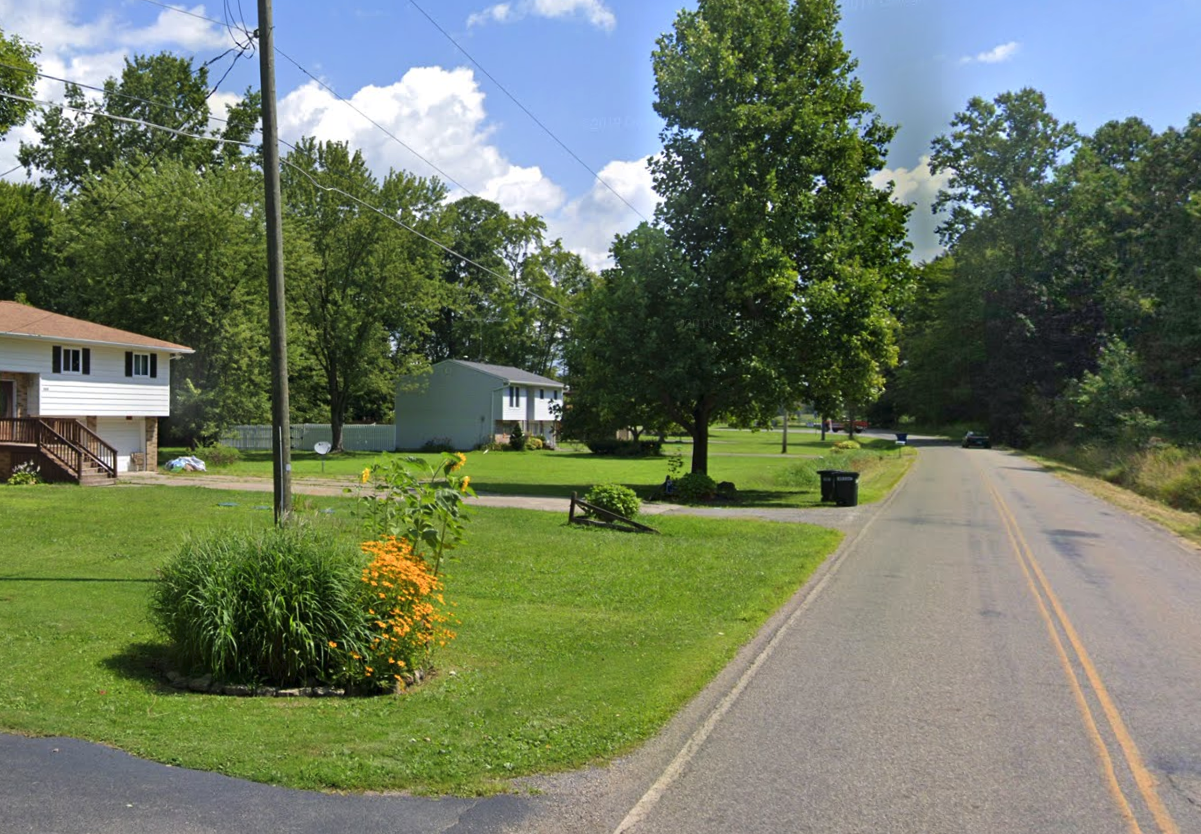
Looks pretty much like countryside. Neat, but not super rich. No sidewalks.
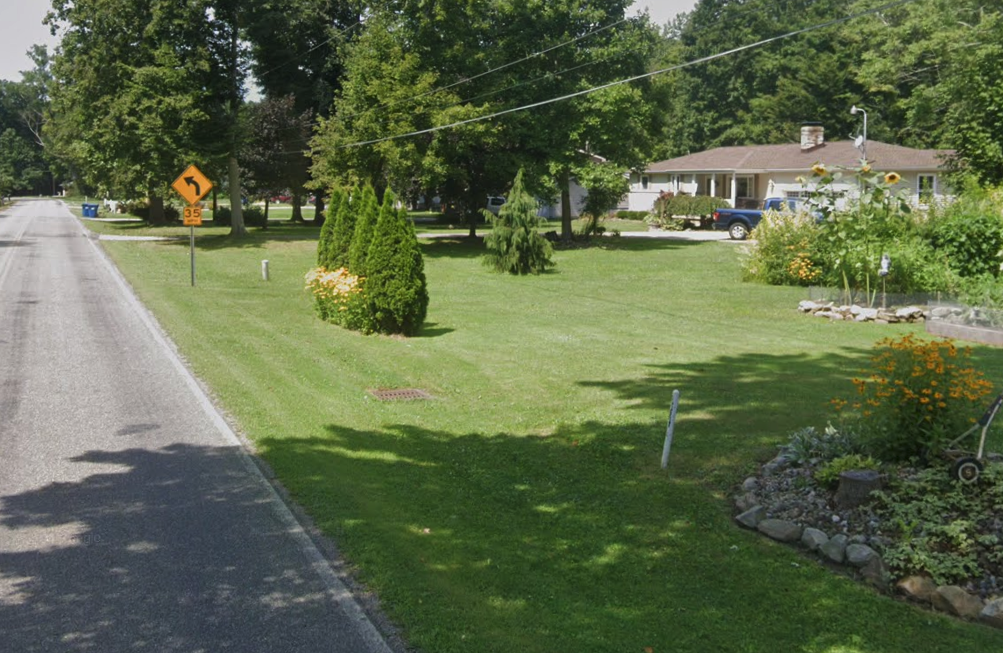
This doesn’t help much either. On balance, Trump.
And it is.
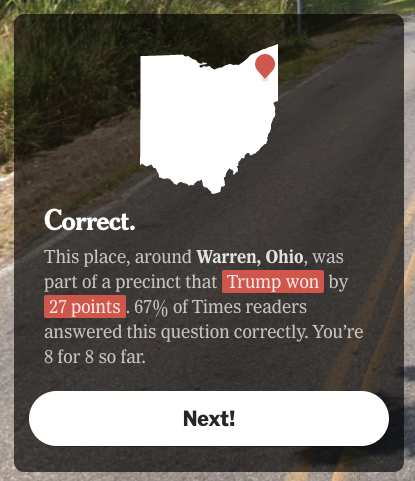
Round 9
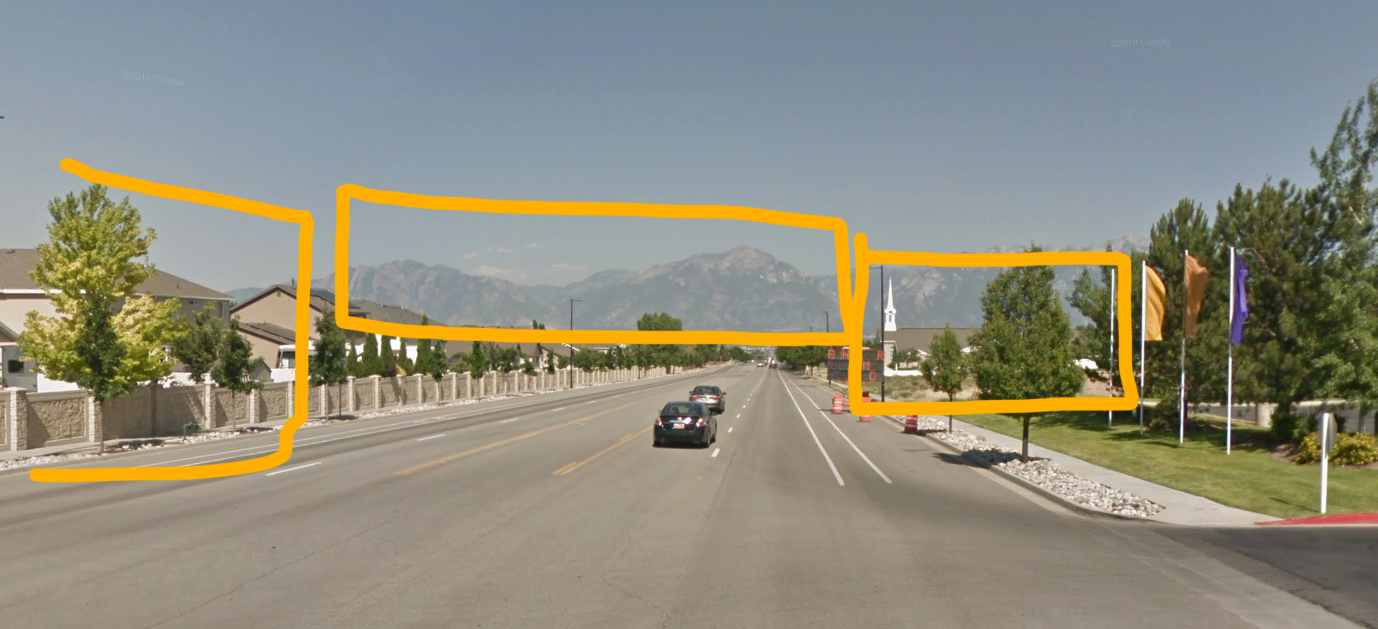
Lots to unpack here. A kind of housing estate on the left, mountains in the distance. And a church, but a modern one. Suburban road.

Looks like a kind of holiday park or hotel? No trucks parked up here. And there’s a sidewalk. It’s well maintained.
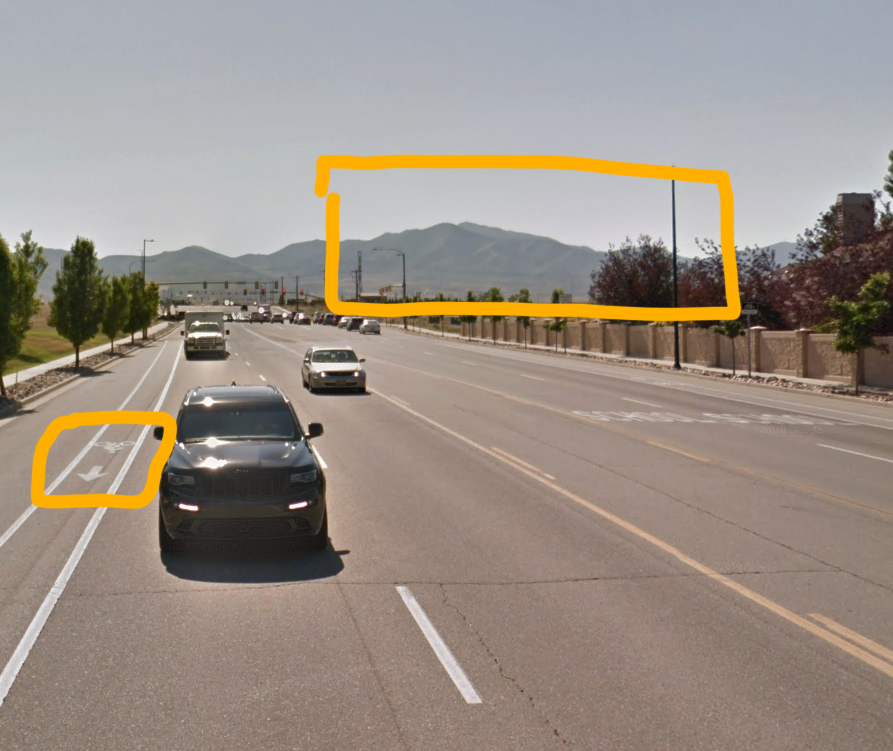
Hills the other way. Dry. And there is a cycle lane. Where are we here? Colorado? Utah?
On balance, based on the vehicles and the buildings, lean Biden.
And no, it’s wrong. Trump. Perhaps if I had assumed it was Utah (maybe I could have identified these mountains?) I would have got it right.
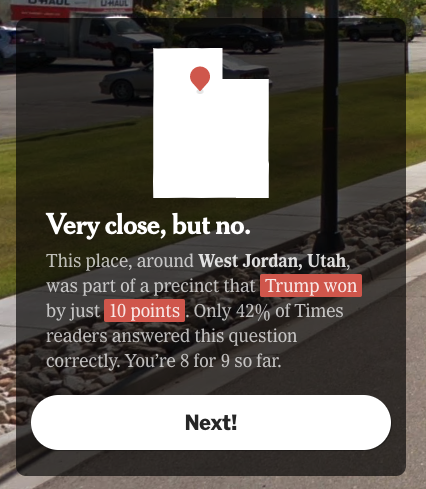
Round 10
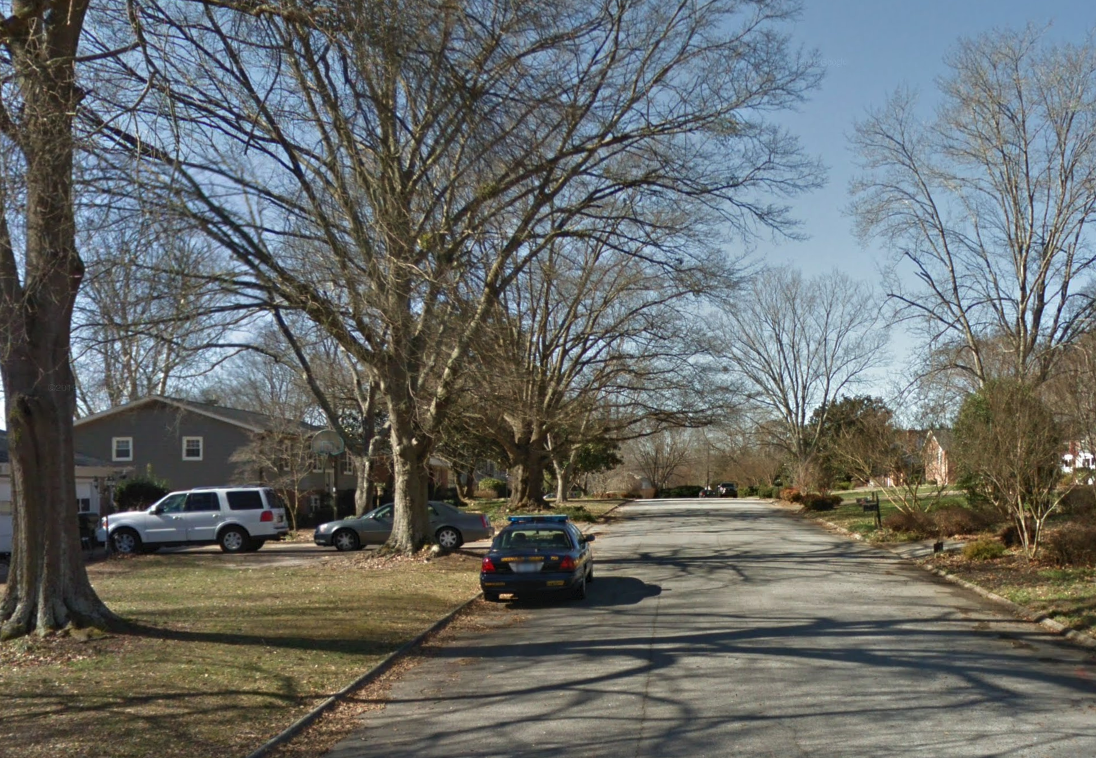
An American could probably identify what police force that car comes from, but I can’t. Trees deciduous, winter time.
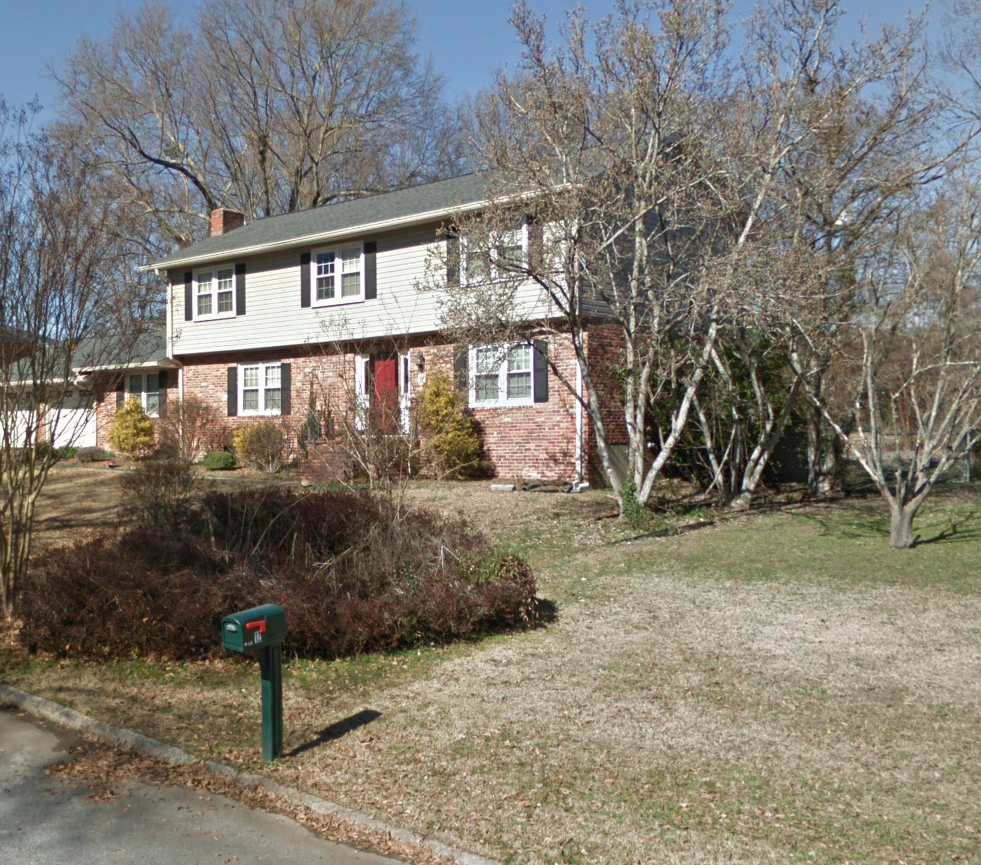
Two storey house, brick.

Front yards with gravel, not really gardens or grass. Something gives me the impression this is on the edge of a city, which together with the building, makes me lean Biden.
But no, I am wrong – it was Trump.
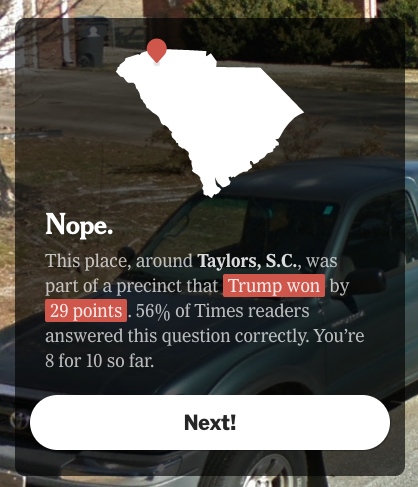
Round 11
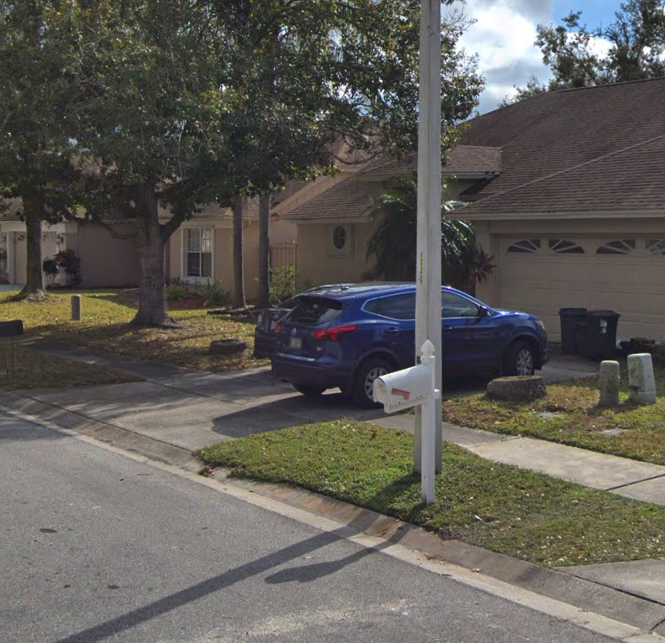
That’s a palm tree behind the lamp post. And it’s pretty green. Florida again?
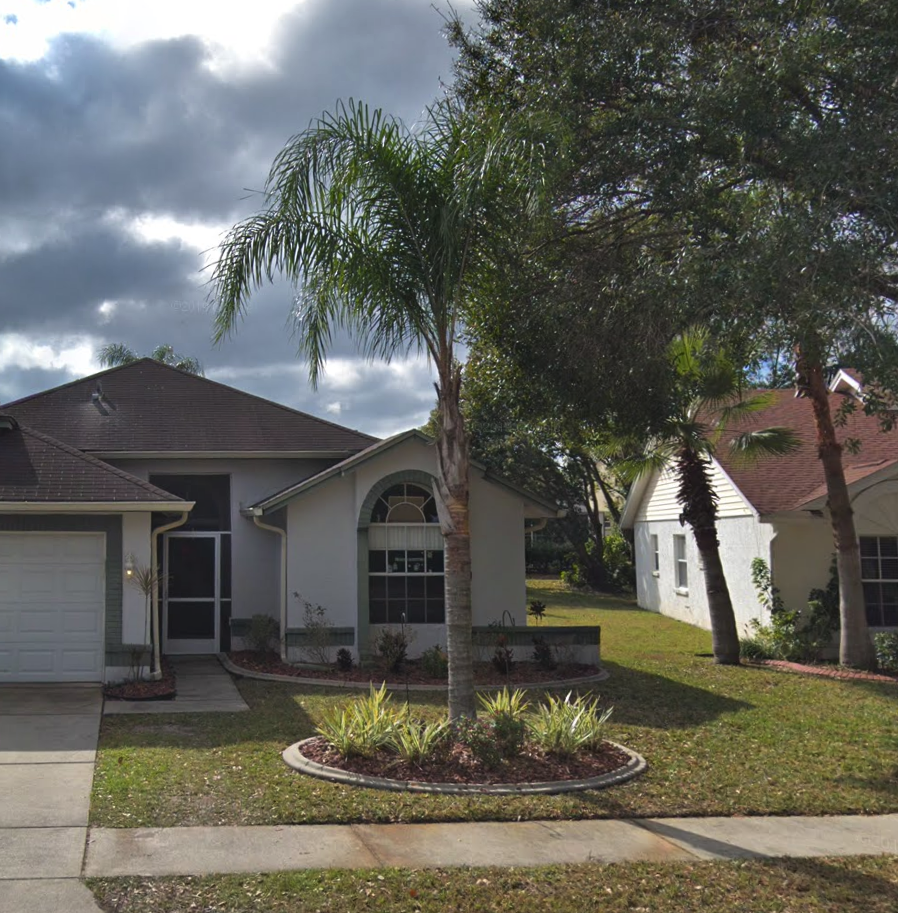
Yes, leaning towards Florida. No cars to help us. Houses not massive. And there is a sidewalk. Perhaps edge of a city? And it was a divided state, so Biden?
No, wrong again. Trump. I need to better get my head around the urban geography of Florida!
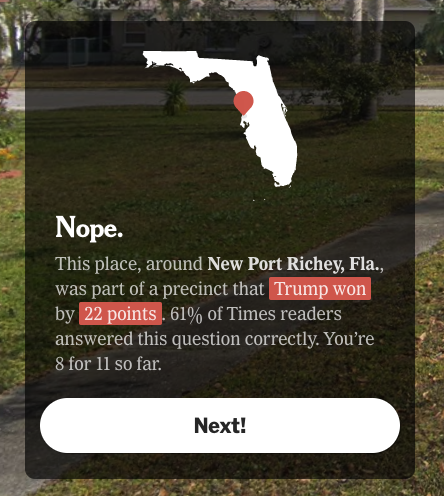
Round 12
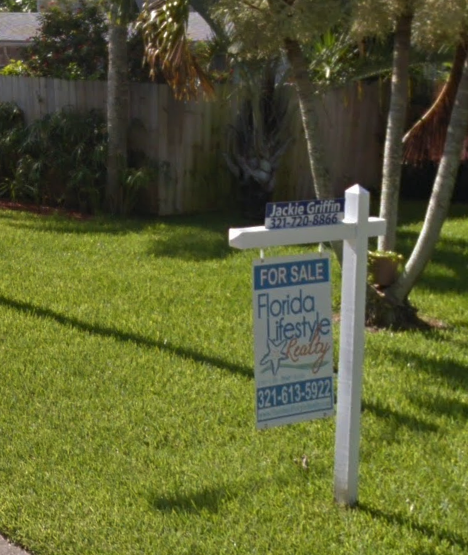
No doubt where we are this time! But how will it vote?

There’s a pretty massive pickup truck.
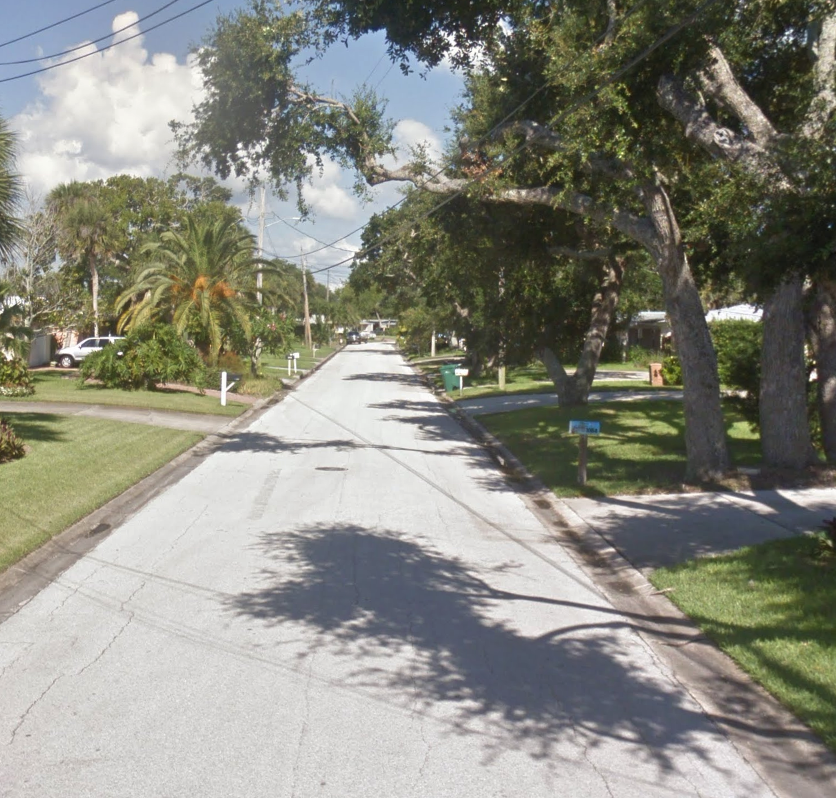
And no sidewalks. Pretty well off. Trump.
And it is.
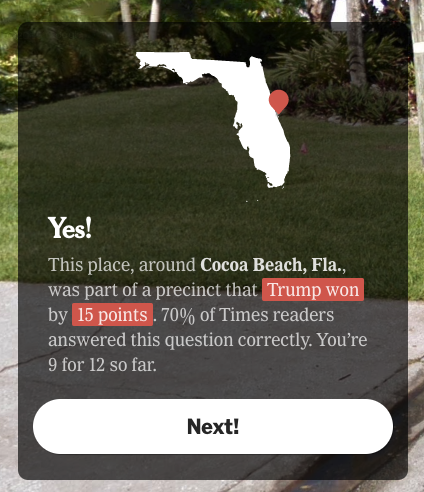
Round 13
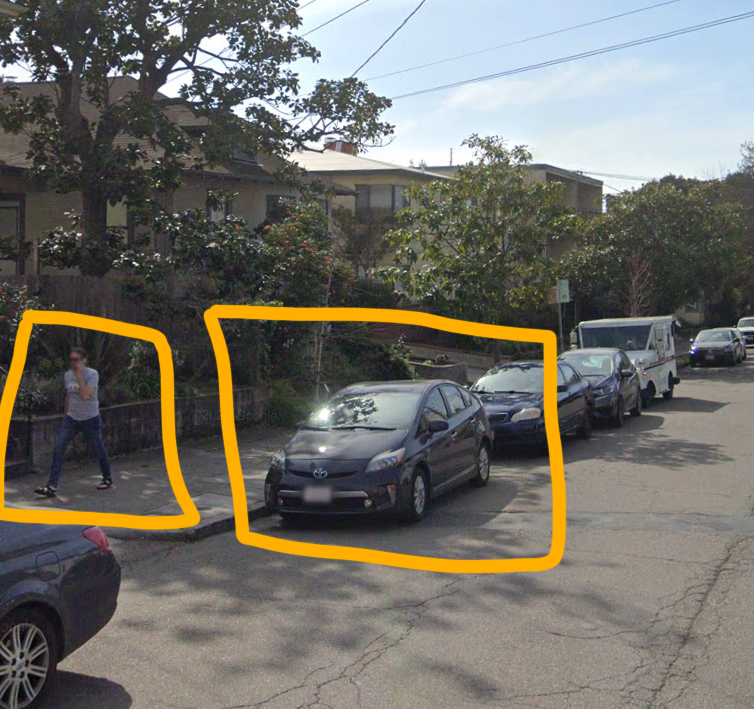
It’s a Prius! And a pedestrian! I think we’ve got this one…
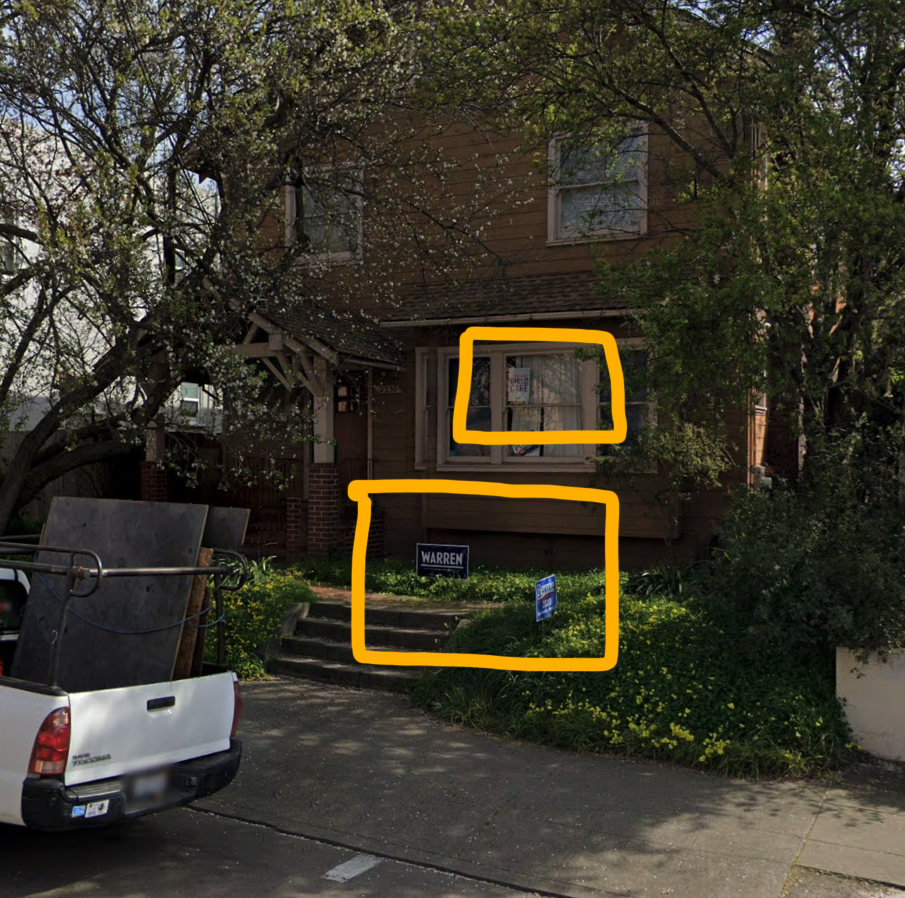
Posters pro child care, and for Warren and Bernie. So this one is Biden. The easiest yet!
Indeed. By a country mile.

Round 14
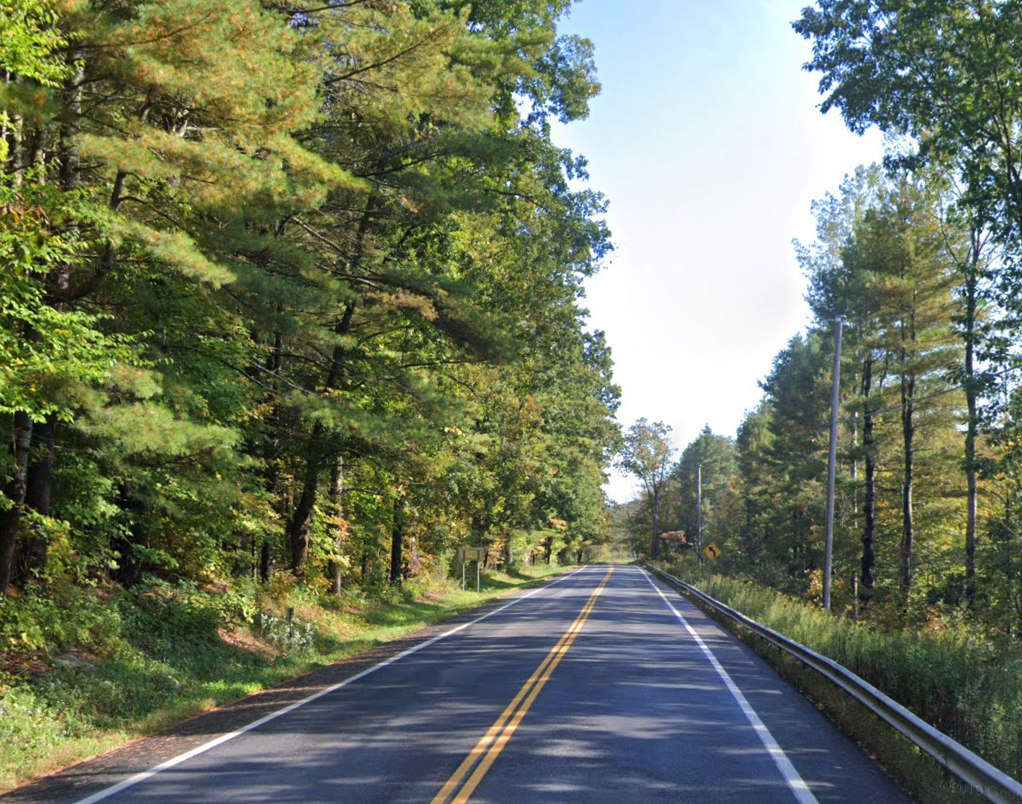
Foliage indicates somewhere north.
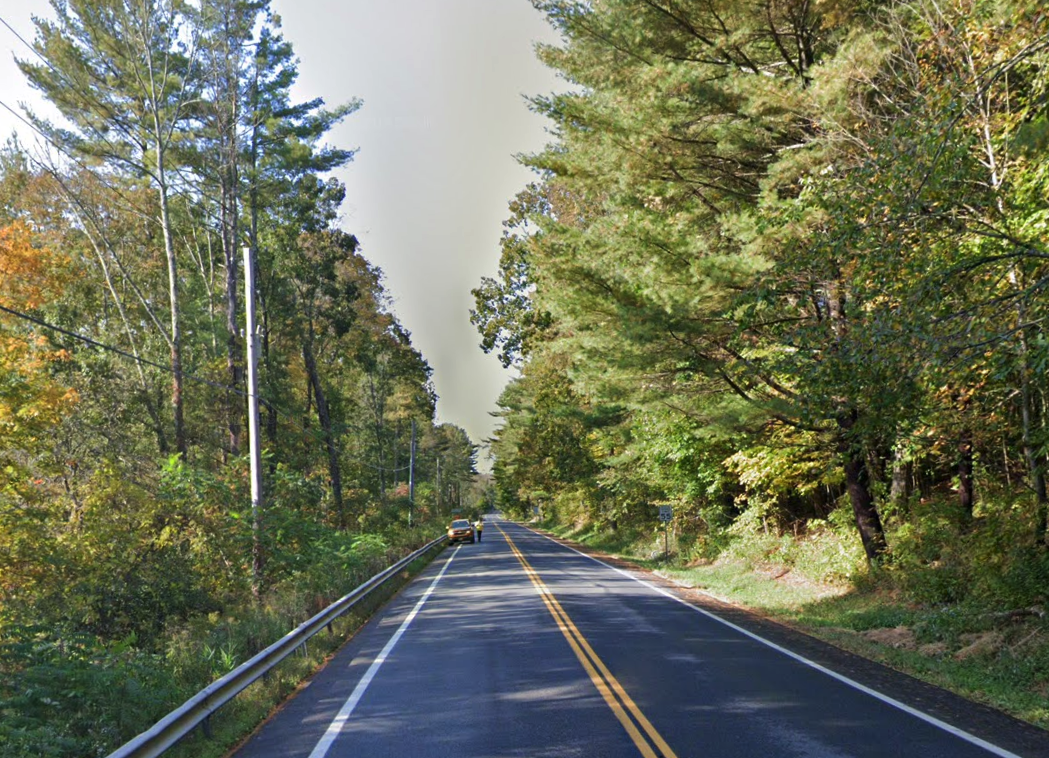
And that’s some kind of worker with high viz. No buildings in sight. Countryside votes Trump, so go for that.
No, New York State and it went for Biden.
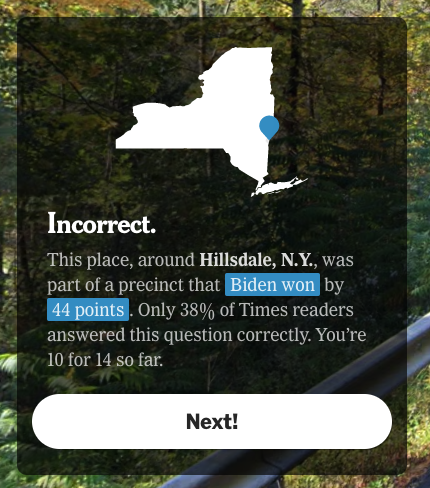
Round 15
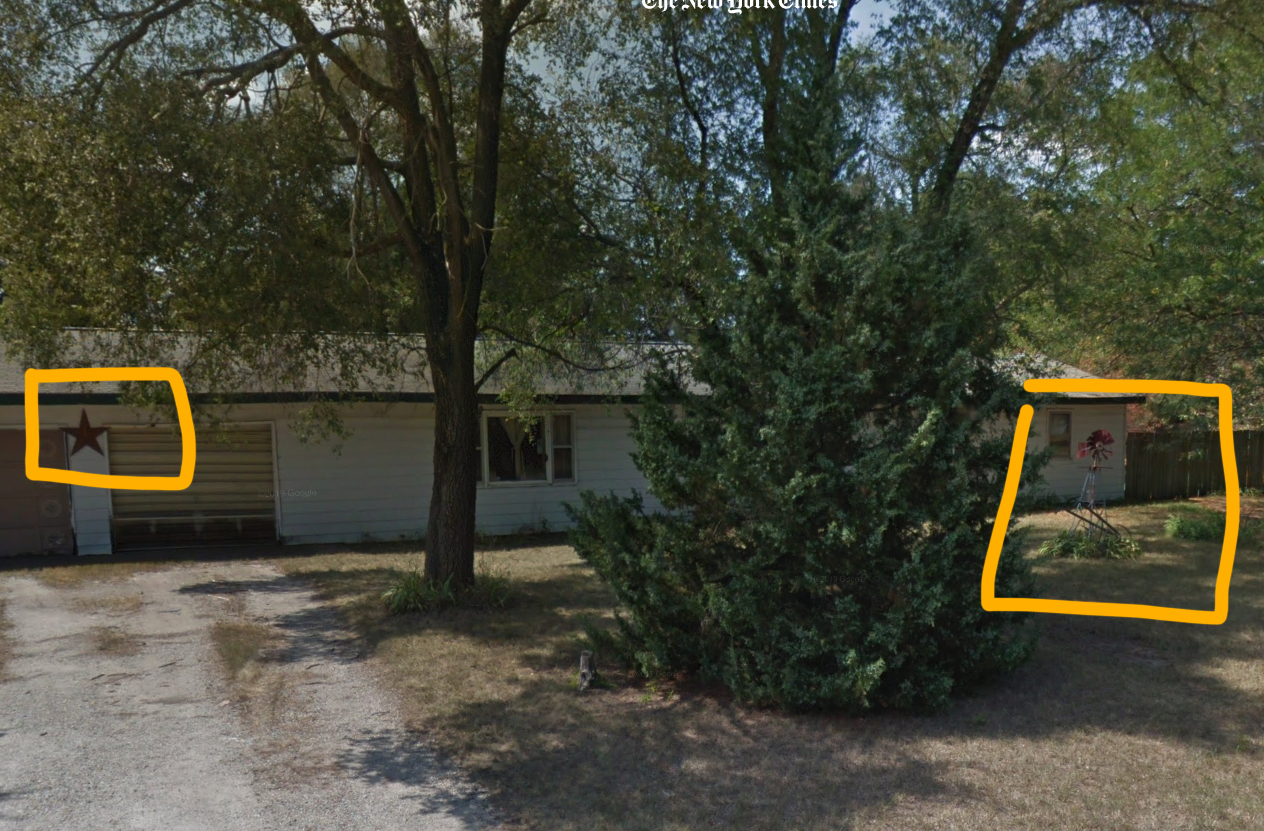
We have a star here – are we in Texas? Does the mini windmill help too? House looks pretty poor.
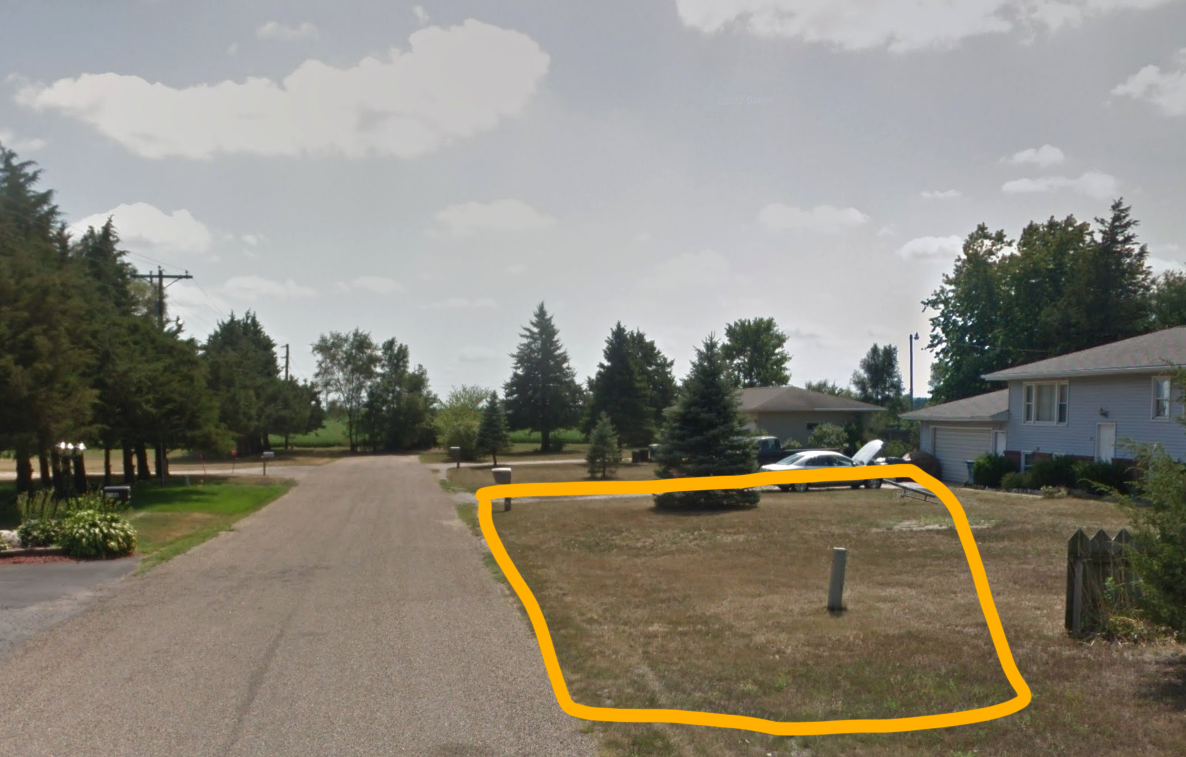
It’s also pretty dry. And no sidewalks. Not in a city. Lean Trump.
And it is, but it wasn’t Texas!

Round 16

Green and lush, but north, based on the vegetation.
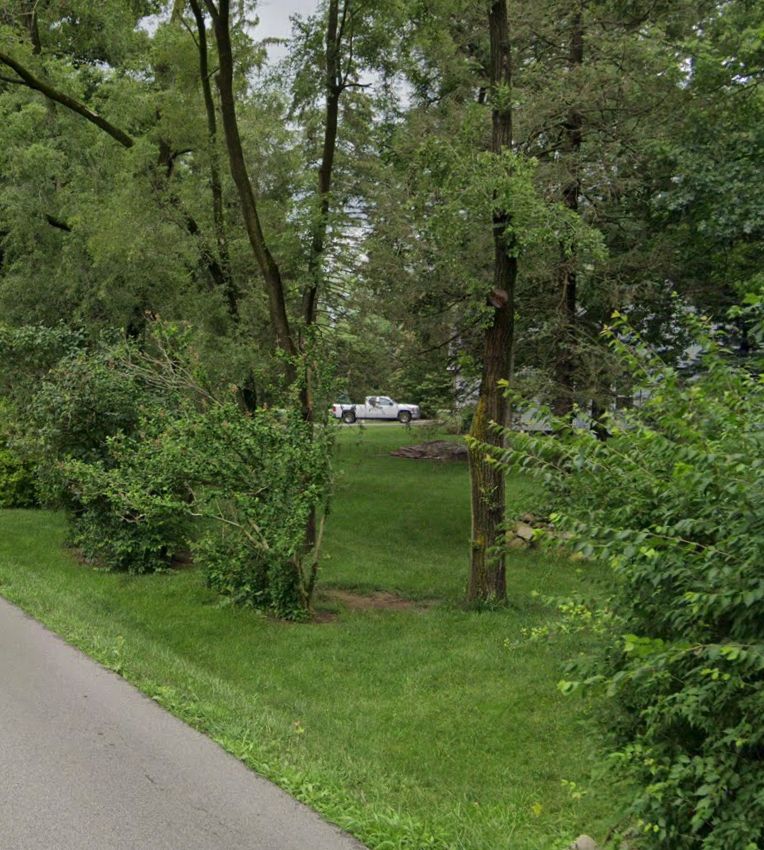
That’s a pretty large truck there.
But information is scarce. So plump for Trump.
And it is.
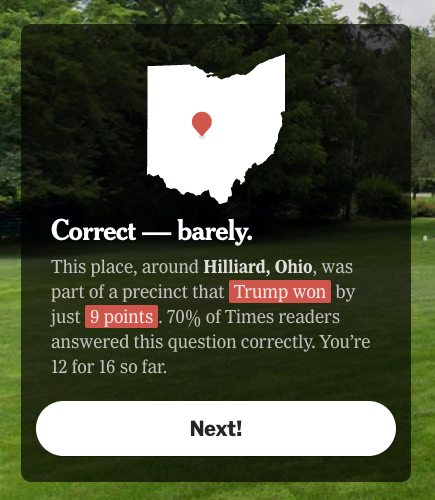
So my result?
12/16, sage of the suburbs.
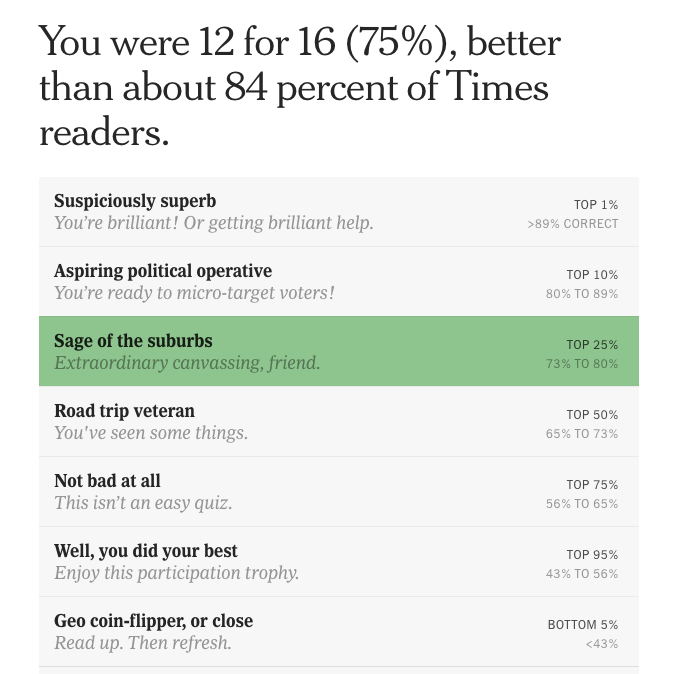
In retrospect rounds 10 and 11 were bad calls. Round 9 and round 14 rely in knowledge that – as a non-American – I am simply lacking. And, based on the data from other Times readers playing the game I am not the only one to struggle with borderline cases like this. But despite all of that this is great fun – and educational too.
Now who’s up for making a similar game for the UK or for Germany?

Re: number 15. The star merely indicates that the occupant is a veteran. Good guesses. I would find it impossible, given that most rural or semi-rural areas in the US look very much alike, except for the odd palm trees or mountain ranges…
Very perceptive and funny!
If you devised a UK Remain/Leave Geoguessr game, I would be strongly tempted to play it (I voted Remain, but lived then, and live now, in places that scream Leave! a mile off). On the other hand, I would want to resist the temptation, as it reminds me too much of that instinct Northern Irish people develop for placing people in this or that community (look how shiny those schoolchildren’s shoes are – they must be Protestant! – that kind of thing). Or indeed the instinct that English people have for discerning tiny gradations in social class based on a person’s appearance or speech or home decor (think Nancy Mitford’s distinction between U and non-U, or Kate Fox’s ‘Watching the English’).
We need to understand these distinctions and what they signify, but also to avoid prejudging people by them. I am trying – it’s not easy – to move beyond tribalism.